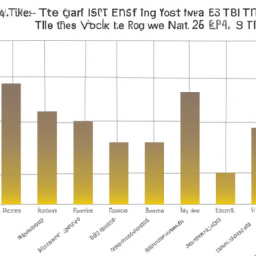Index funds have been a popular choice for investors for their low fees and easy way to gain exposure to the market. However, with the rise of ETFs, investors now have access to a wide range of investment options that cater to specific investment goals. In this article, we will discuss some of the top ETFs to consider for your portfolio.
During the go-go days of growth, gold ETF investments weren't all that popular in many portfolios. But thanks to recent uncertainty, gold ETFs have become a popular choice for investors looking to hedge against market volatility. One such ETF is the SPDR Gold Trust (GLD), which tracks the price of gold and has a low expense ratio of 0.4%.
Popular
After a terrible 2022, the tech sector was left for dead by many investors. But in 2023, tech is back, and big tech stocks are surging after a period of consolidation. Investors looking to gain exposure to the tech sector can consider the Technology Select Sector SPDR Fund (XLK), which tracks the performance of the technology sector and has a low expense ratio of 0.13%.
Research
Harbor Capital Advisors offers three ETFs that provide exposure to the human capital factor, a distinctive investment factor measuring the quality and productivity of a company's workforce. The Harbor Human Capital ETF (HCCI), Harbor International Human Capital ETF (HIIK), and Harbor Global Human Capital ETF (HGHH) have expense ratios ranging from 0.35% to 0.45%.
The Federal Reserve has furiously raised interest rates throughout 2022 in an effort to rein in high inflation. Here are some of the best ETFs to consider for investors looking to capitalize on rising interest rates: iShares 0-5 Year TIPS Bond ETF (STIP), iShares Floating Rate Bond ETF (FLOT), and SPDR Bloomberg Barclays 1-3 Month T-Bill ETF (BIL). These ETFs have expense ratios ranging from 0.06% to 0.15%.
Stocks
Schwab U.S. Dividend Equity ETF (SCHD) is one of the best dividend ETFs one could hold within their portfolio. The ETF invests in high-quality U.S. companies with a history of consistent dividend payments and has an expense ratio of 0.06%. With a dividend yield of 3.3%, this ETF provides a steady stream of passive income to its investors.
Zinc may not have the allure of pretty metals like gold and silver, but what it lacks in aesthetic value, it makes up for in utility. The iShares MSCI Global Metals & Mining Producers ETF (PICK) invests in companies involved in the extraction and production of industrial metals, including zinc. The ETF has an expense ratio of 0.39%.
Growth ETFs give investors easy exposure to the wide world of growth investing. The Vanguard Growth ETF (VUG) tracks the performance of the CRSP US Large Cap Growth Index and invests in companies with strong growth potential. With an expense ratio of 0.04%, this ETF is a low-cost way to gain exposure to growth stocks.
Dividend ETFs provide a steady stream of passive income to investors, and here are some of the top names to consider: Vanguard Dividend Appreciation ETF (VIG), iShares Select Dividend ETF (DVY), and Invesco Dividend Achievers ETF (PFM). These ETFs have expense ratios ranging from 0.08% to 0.25% and offer exposure to companies with a history of consistent dividend payments.
In conclusion, ETFs offer investors a wide range of investment options to consider. Whether you're looking to hedge against market volatility, gain exposure to a specific sector, or generate passive income, there is an ETF out there to meet your needs. By doing your research and choosing the right ETFs for your portfolio, you can achieve a diversified portfolio that aligns with your investment goals.
